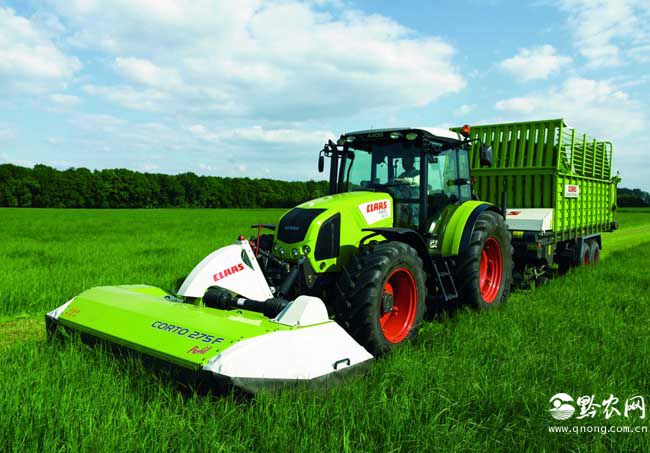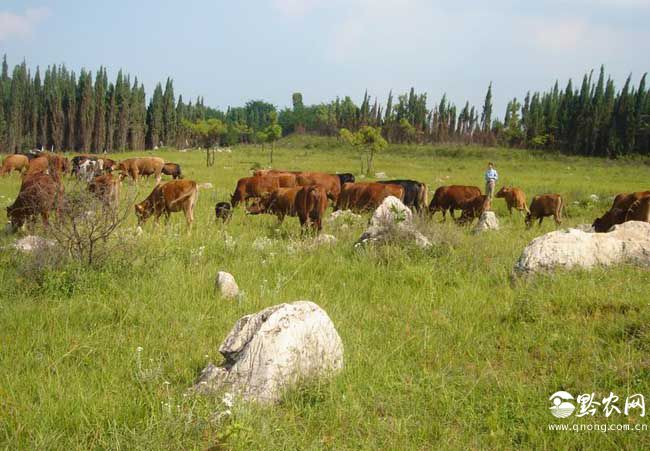The basic characteristics of agricultural industrialization

Agricultural industrialization is market-oriented, centered on economic benefits, focusing on leading industries and products, optimizing and combining various factors of production, carrying out regional layout, specialized production, large-scale construction, serialized processing, socialized service and enterprise management, and forming an integrated management system of cultivation, production, supply and marketing, trade, industry and agriculture, agriculture, industry and agriculture, agriculture, science and education. Make agriculture embark on the modern management mode and industrial organization form of the benign development track of self-development, self-accumulation, self-restraint and self-regulation. In essence, it refers to the process of technological transformation of traditional agriculture and promoting the progress of agricultural science and technology. This kind of management model promotes the transformation from traditional agriculture to modern agriculture as a whole, which is an effective way to accelerate agricultural modernization.
The basic thinking of Agricultural industrialization
The basic idea of agricultural industrialization is to determine the leading industry, implement regional layout, rely on leading, develop large-scale operation, carry out the industrial organization form of market leading, leading base and base even farmers. Its basic types are: market connection type, leading enterprise-led type, agricultural science-education combination type, professional association-led type.
The basic characteristics of agricultural industrialization
Compared with the traditional closed agricultural production and operation, agricultural industrialization has the following basic characteristics:
1. Marketization: market is the starting point and destination of agricultural industrialization. The management of agricultural industrialization must be guided by domestic and foreign markets and change the closed state of self-sufficiency and self-service of the traditional small-scale peasant economy. its resource allocation, combination of factors of production, means of production and product purchase and sale are configured and realized by the market mechanism.
2. Regionalization: that is, the production of agricultural and sideline products of agricultural industrialization should be relatively concentrated and connected within a certain area to form a relatively stable regional production base, so as to prevent the production layout from being too scattered to cause inconvenient management and unstable production.
3. Specialization: that is, specialization of production, processing, sales and service. Agricultural industrialization requires the improvement of labor productivity, land productivity, resource utilization rate and commodity rate of agricultural products, and so on, which can only be achieved through specialization. In particular, the production of agricultural by-products, as the basis of agricultural industrialization, requires the organization of small and scattered farmers, regional layout, specialized production, and expanding the external scale of farmers on the basis of maintaining the stability of the household contract responsibility system. solve the contradiction between the narrow scale of peasant household management and the appropriate scale required by modern agriculture.
4. Scale: large-scale production and operation is a necessary condition for agricultural industrialization. Only when the production base and processing enterprises reach a considerable scale can they reach the standard of industrialization. Only when agricultural industrialization has a certain scale, can it enhance radiation, driving force and competitiveness, and improve economies of scale.
5. Integration: that is, the one-stop operation of production, marketing and trade, industry and agriculture, organically combining the prenatal, mid-production, and post-natal links of agriculture to form a "dragon" industrial chain, so that the participants in each link can truly form a community of interests with shared risks, equal benefits, common prosperity and decline, and a common destiny. This is the essence of agricultural industrialization.
6. Intensification: the production and management activities of agricultural industrialization should meet the requirements of "three highs", that is, high scientific and technological content, high comprehensive utilization rate of resources, and high efficiency.
7. Socialization: that is, the socialization of service system. The industrialized operation of agriculture requires the establishment of a socialized service system to provide prenatal, mid-and post-natal information, technology, funds, materials, operation and management services to all components of the integration. to promote the direct, close and effective combination and operation of various production and management factors.
8. Commercialization: that is, the industrialization of production, operation and management. Not only the leading enterprises of agricultural industry should be standardized enterprise operation, but also their agricultural and sideline product production bases should be developed from traditional agriculture to large-scale facility agriculture and factory agriculture in order to meet the requirements of planning, standardization and standardization of industrial and commercial operation of leading enterprises.
The above characteristics show that the connotation of agricultural industrialization is very rich, and from these rich connotations, many other extension functions and meanings can be extended. For example, the role of the adjustment of the industrial structure and product structure of township enterprises, the promotion of new rural construction, small town construction and rural urbanization, and so on.
Related
- A course of planting techniques and methods on how to grow carrots
- How to plant the latest tulips?
- Is it better to pick tea in the morning or in the afternoon? When is the best time for tea to be picked? what is the third or fifth tea?
- Launch Yuanxiao Happy combination Haocha + Tea Yuan healthy Taste
- Penghu Tourism "Fireworks 20 Parade with You"
- 2022 West Lake Happiness holds "Digital Revitalization Voucher" and draws iphone13 and laptop.
- Banqiao Fuzhou social houses are designed to change start-up combined with police elimination to create a safe and livable environment
- The convenient measure of "mechanical weeding" in Xinbei has been abused and the Agriculture Bureau has imposed heavy penalties on the illegal land consolidation.
- Changgeng University Joins Hands with Four Memory Factories to Rescue Memory Talent Shortage
- The list of Taiwan's top 100 MVP managers is listed by the Director-General of the Farmers' Association of Sanxia District.



